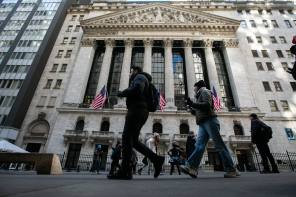This may give us a timeframe for the virus’s impact when coupled with strong government containment practices: about two to three months.
Since the virus was first detected three months ago, the Hang Seng Index has given back all of its gains: about 10 per cent, most of which was lost after the virus spread past China’s borders.
If South Korea and the western GDP powerhouses – US, UK, Germany – are able to contain the virus, limiting its economic impact, we could see a “V” shaped recover: a fast drop followed by an equally rapid rise.
Unfortunately, this best-case scenario is quickly becoming less and less likely.
Prolonged course: The U-shaped recovery
Figure 2: S&P 500 crash and recovery times for both the tech bubble and GFC crashes in the past 20 years.
Perhaps more realistic is a “U” shaped recovery that still brings us back to the same levels are pre-pandemic but takes longer to achieve.
The argument for such a course is that lost revenue from several months’ low productivity cannot be made up quickly by resuming work: the best we can do is to recover slowly.
Of course, the amount of time matters: a “U” shape could take years to return to previous highs.
With the tech bubble crash of 2000, it took almost seven years for the S&P 500 to return to its previous high and with the GFC, it took the S&P 500 about 5.5 years to recover.
Both of these crashes exhibited year-long declines followed by longer recovery periods, as shown in Figure 2.
The tech bubble crash took about 2.5 years from peak to trough and then took a little over four years to regain the previous high.
The GFC crash was faster, with only 1.3 years from peak to trough with a similar four-year recovery.
Worst case scenario: The L-shaped recovery
Figure 3: The Great Depression took a little less than 3 years from market peak-to-trough but took over 20 years to recover.
Looking at the worst economic and market disaster for which we have data, the Great Depression, shows what a very-long recovery time scenario might look like, as shown in Figure 3.
That crash also took a short time from peak-to-trough: a little under three years. But it took far longer – over 22 years – to recover that pre-crash high.
Of course, today’s governments have far more sophisticated tools at their disposal to deliver economic stimulus.
But we are also facing unprecedented environmental challenges that have the potential to further adversely impact our economic growth and financial markets.
Scientists also tell us that warmer temperatures bring with them conditions for more novel diseases.













